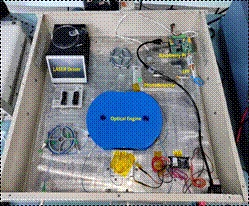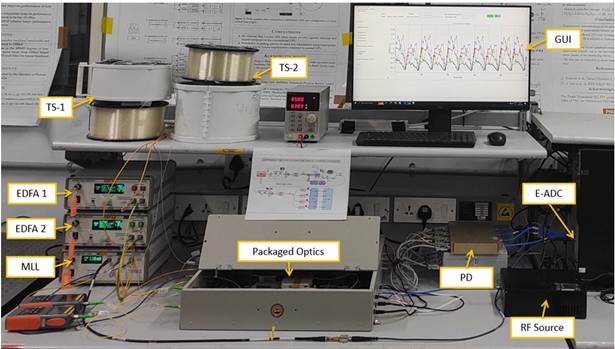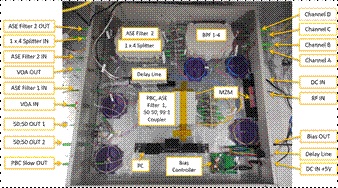Ministry of Science & Technology
New technology developed to transport of radio frequency (RF) through optical methods could improve digital & satellite communication
प्रविष्टि तिथि:
24 AUG 2023 8:04PM by PIB Delhi
A newly designed prototypes in the Next-Generation Photonic Analog-to-Digital Converters (NG-PADC) project which can carry out instantaneous frequency measurement, generation and transport of Radio Frequency (RF) through optical methods could revolutionize various sectors, enabling faster digital communication, improved satellite communication, better medical imaging, and Photonic radars.
Analog-to-digital converters (ADCs) are critical components for developing the next generation of advanced digital receivers. The limitation of electronic ADCs (EADCs) is that their vertical resolution is compromised at high bandwidths. There are two possible approaches to solve this problem through Photonics.
RF, when modulated on a spectrally rich optical pulsed source, can be stretched in the optical domain through a dispersive medium, thus converting high-frequency RF signals into effectively low-frequency signals. This reduces the input bandwidth requirements of the back-end ADC as many times as the stretch factor of the optical pulse. The other Photonic approach is to use an optical clock whose fluctuations in timing (timing jitter) is much smaller an electronic clock; which is possible with a short pulsed laser. High bandwidth RF signals, when sampled with stable optical clocks, can provide a much higher effective number of bits (ENOB) compared to electronic clocks. It has time-stretched photonic ADC with effective bandwidth 12 times higher than EADC, which enables digitisation of signals with a much larger precision.
An NG-PADC developed by IIT Madras with support from the IMPRINT programme of Science, Engineering, Research Board (SERB), is equipped with a time-stretched photonic ADC whose effective bandwidth is 12 times higher than a corresponding EADC, which enables sampling of higher bandwidth signal with effectively lower bandwidth EADCs.
They have been working with high-bandwidth signals for digital coherent communication where the scaling spectral efficiency is challenging because of the limited ENOB of EADCs and trying to look for fundamental solutions for this problem.
“Our interactions with DRDO gave us confidence to build these solutions since we found that radar signal processing is also limited by the available electronics. We were also approached by our industry partner, with similar requirements. Thus, all these expertise came together for the development of NG-PADC,” said the scientists.
The scientists have tied up with Hyderabad based Lightmotif Automation, for reaching the technology to the people.

Experimental setup of Sub-Nyquist PADC System


Top view of MLL Packaged unit of MLL


Top view of Sub-Nyquist PADC system Packaged unit of Sub-Nyquist PADC system

Experimental setup of TS-PADC


Top view of the packaged TS-PADC Packaged unit of TS-PADC
*****
SNC
(रिलीज़ आईडी: 1951809)
आगंतुक पटल : 1685